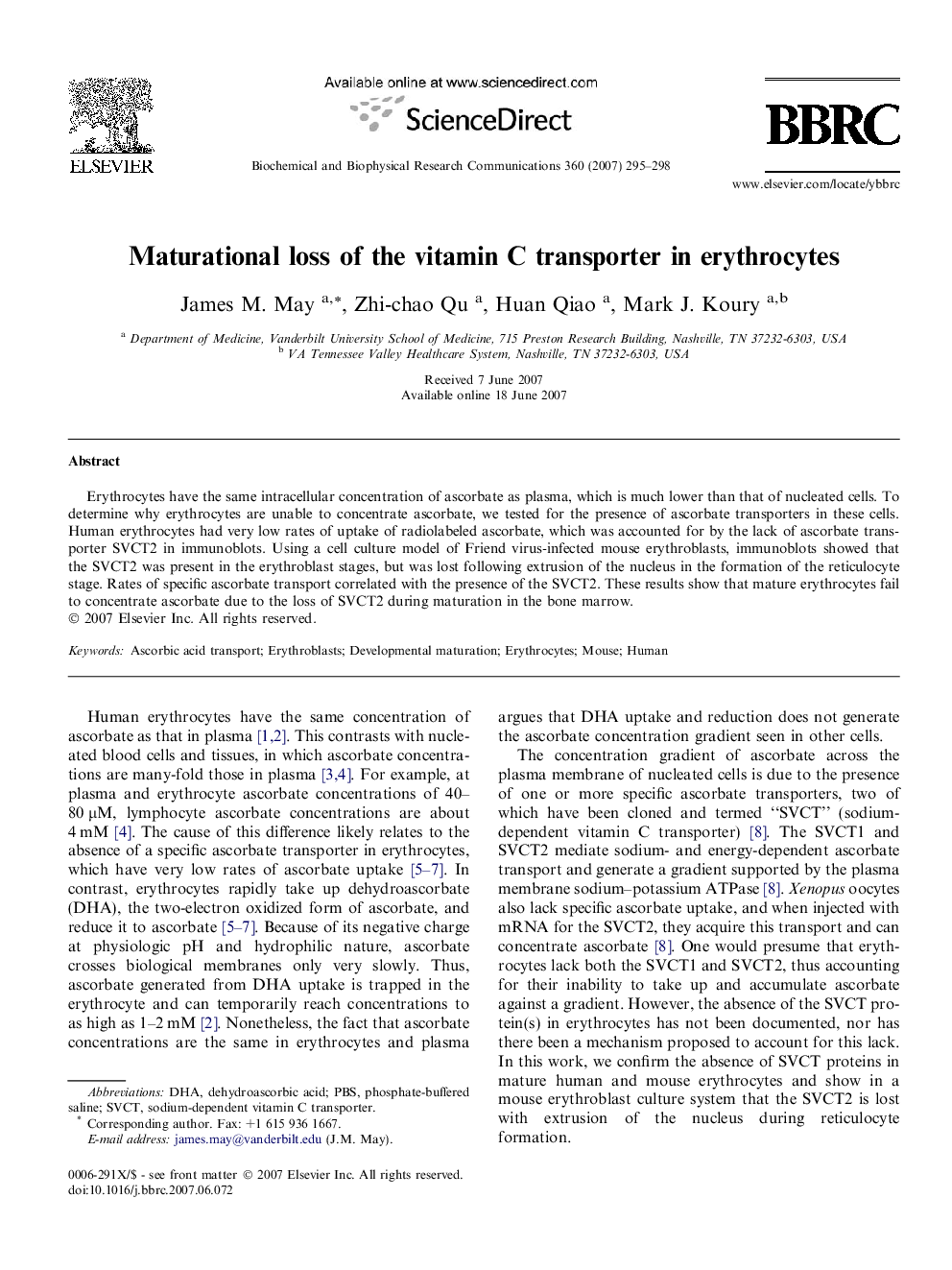| Article ID | Journal | Published Year | Pages | File Type |
|---|---|---|---|---|
| 1937409 | Biochemical and Biophysical Research Communications | 2007 | 4 Pages |
Abstract
Erythrocytes have the same intracellular concentration of ascorbate as plasma, which is much lower than that of nucleated cells. To determine why erythrocytes are unable to concentrate ascorbate, we tested for the presence of ascorbate transporters in these cells. Human erythrocytes had very low rates of uptake of radiolabeled ascorbate, which was accounted for by the lack of ascorbate transporter SVCT2 in immunoblots. Using a cell culture model of Friend virus-infected mouse erythroblasts, immunoblots showed that the SVCT2 was present in the erythroblast stages, but was lost following extrusion of the nucleus in the formation of the reticulocyte stage. Rates of specific ascorbate transport correlated with the presence of the SVCT2. These results show that mature erythrocytes fail to concentrate ascorbate due to the loss of SVCT2 during maturation in the bone marrow.
Keywords
Related Topics
Life Sciences
Biochemistry, Genetics and Molecular Biology
Biochemistry
Authors
James M. May, Zhi-chao Qu, Huan Qiao, Mark J. Koury,
